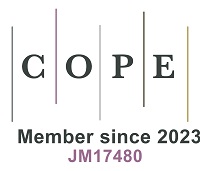REFERENCES
1. IEA. Iron and steel technology roadmap. 2020. Available from: https://www.iea.org/reports/iron-and-steel-technology-roadmap [Last accessed on 19 Mar 2025].
2. World steel in Figures. 2024. Available from: https://worldsteel.org/data/world-steel-in-figures-2024/ [Last accessed on 26 Mar 2025].
3. China Iron and Steel Association Research Group on the Development of Electric Arc Furnace Short Process Steelmaking. Research on the development of electric Arc furnace short process steelmaking in China. Metall. Manag. 2023, 20, 4-20. Available from: https://kns.cnki.net/kcms2/article/abstract?v=hW9FdoQEerqEvapyxeKkqpQu87yyvmY_qg8pqoHdL3-vH_Si2cyMUo8ugHMvVVcFeeDan9949eTRXXenpOz8pifitJkZkZmopZfDse0MBz54bmneOD-hn4Xi0v41ZPrKqdK3boG13FPsM3JHXHeKl9mjfzOm2ViAWNiLAM4gcGP0h1zPgaYg5me0dLICSNVr&uniplatform=NZKPT&language=CHS [Last accessed on 19 Mar 2025]
4. Steel statistical yearbook 2022. Available from: https://worldsteel.org/wp-content/uploads/Steel-Statistical-Yearbook-2022.pdf?utm [Last accessed on 19 Mar 2025].
5. Wang, K.; Che, L.; Ma, C.; Wei, Y. M. The shadow price of CO2 emissions in China’s iron and steel industry. Sci. Total. Environ. 2017, 598, 272-81.
6. Zhang, Q.; Xu, J.; Wang, Y.; et al. Comprehensive assessment of energy conservation and CO2 emissions mitigation in China’s iron and steel industry based on dynamic material flows. Appl. Energy. 2018, 209, 251-65.
7. International Energy Agency. IEA world energy outlook 2012. Available from: https://iea.blob.core.windows.net/assets/ebe15dfb-30c8-42cf-8733-672b3500aed7/WEO2012_free.pdf [Last accessed on 19 Mar 2025].
9. Steffen, B.; Schmidt, T. S. Strengthen finance in sustainability transitions research. Environ. Innov. Soc. Trans. 2021, 41, 77-80.
10. Sanders, M.; Serebriakova, A.; Fragkos, P.; Polzin, F.; Egli, F.; Steffen, B. Representation of financial markets in macro-economic transition models - a review and suggestions for extensions. Environ. Res. Lett. 2022, 17, 083001.
11. Li, W.; Lu, C.; Ding, Y.; Zhang, Y. The impacts of policy mix for resolving overcapacity in heavy chemical industry and operating national carbon emission trading market in China. Appl. Energy. 2017, 204, 509-24.
12. Yang, G.; Fukuyama, H.; Song, Y. Estimating capacity utilization of Chinese manufacturing industries. Soc. Econ. Plan. Sci. 2019, 67, 94-110.
13. Wang, P.; Li, W.; Kara, S. Cradle-to-cradle modeling of the future steel flow in China. Resour. Conserv. Recy. 2017, 117, 45-57.
14. Wang, Y.; Liu, J.; Tang, X.; Wang, Y.; An, H.; Yi, H. Decarbonization pathways of China's iron and steel industry toward carbon neutrality. Resour. Conserv. Recy. 2023, 194, 106994.
15. Wårell, L. Trends and developments in long-term steel demand - the intensity-of-use hypothesis revisited. Resour. Policy. 2014, 39, 134-43.
16. Xuan, Y.; Yue, Q. Forecast of steel demand and the availability of depreciated steel scrap in China. Resour. Conserv. Recy. 2016, 109, 1-12.
17. Yu, X.; Tan, C. China’s pathway to carbon neutrality for the iron and steel industry. Global. Environ. Chang. 2022, 76, 102574.
18. Ren, L.; Zhou, S.; Peng, T.; Ou, X. A review of CO2 emissions reduction technologies and low-carbon development in the iron and steel industry focusing on China. Renew. Sustain. Energy. Rev. 2021, 143, 110846.
19. Li, Z.; Hanaoka, T. Plant-level mitigation strategies could enable carbon neutrality by 2060 and reduce non-CO2 emissions in China’s iron and steel sector. One. Earth. 2022, 5, 932-43.
20. Li, Z.; Dai, H.; Song, J.; et al. Assessment of the carbon emissions reduction potential of China's iron and steel industry based on a simulation analysis. Energy 2019, 183, 279-90.
21. Sun, Q. Carbon dioxide emission scenario simulation and emission reduction path research of China's steel industry under the background of "Double Carbon”. 2023 Available from: https://kns.cnki.net/kcms2/article/abstract?v=uQzRnDzoTXH6CEHXv0aHDfamE4A6RxcO9vzM5VCfr8k32YzLsupkPWrgfTH5ds038FtcyKWR3PX6tSy4ogTA6UTB95plqZ7fjb-YnpYL94UJw42Qmjugcp1bn4i7Ra2YUNw72rSEC-mbaIK7cPjhk2c4VRhieBMn59OCAmtO32xPHqB0awDhU6x-g2AVcs1bCHRtCgx0iZMiK-gp4Bn0nQ==&uniplatform=NZKPT [Last accessed on 26 Mar 2025].
22. World steel in Figures. 2021. Available from: https://worldsteel.org/wp-content/uploads/2021-World-Steel-in-Figures.pdf?utm [Last accessed on 19 Mar 2025].
23. Kuramochi, T. Assessment of midterm CO2 emissions reduction potential in the iron and steel industry: a case of Japan. J. Clean. Prod. 2016, 132, 81-97.
24. Zhu, X.; Li, H.; Chen, J.; Jiang, F. Pollution control efficiency of China's iron and steel industry: evidence from different manufacturing processes. J. Clean. Prod. 2019, 240, 118184.
25. Long, W.; Wang, S.; Lu, C.; et al. Quantitative assessment of energy conservation potential and environmental benefits of an iron and steel plant in China. J. Clean. Prod. 2020, 273, 123163.
26. Hasanbeigi, A.; Jiang, Z.; Price, L. Retrospective and prospective analysis of the trends of energy use in Chinese iron and steel industry. J. Clean. Prod. 2014, 74, 105-18.
27. Wang, X.; Yu, B.; An, R.; Sun, F.; Xu, S. An integrated analysis of China’s iron and steel industry towards carbon neutrality. Appl. Energy. 2022, 322, 119453.
28. Wen, Z.; Meng, F.; Chen, M. Estimates of the potential for energy conservation and CO2 emissions mitigation based on Asian-Pacific Integrated Model (AIM): the case of the iron and steel industry in China. J. Clean. Prod. 2014, 65, 120-30.
29. Chen, W.; Yin, X.; Ma, D. A bottom-up analysis of China’s iron and steel industrial energy consumption and CO2 emissions. Appl. Energy. 2014, 136, 1174-83.
30. Ma, D.; Chen, W.; Yin, X.; Wang, L. Quantifying the co-benefits of decarbonisation in China’s steel sector: an integrated assessment approach. Appl. Energy. 2016, 162, 1225-37.
31. An, R.; Yu, B.; Li, R.; Wei, Y. M. Potential of energy savings and CO2 emission reduction in China’s iron and steel industry. Appl. Energy. 2018, 226, 862-80.
32. Li, W.; Zhang, S.; Lu, C. Research on the driving factors and carbon emission reduction pathways of China's iron and steel industry under the vision of carbon neutrality. J. Clean. Prod. 2022, 357, 131990.
33. Morfeldt, J.; Nijs, W.; Silveira, S. The impact of climate targets on future steel production - an analysis based on a global energy system model. J. Clean. Prod. 2015, 103, 469-82.
34. Shen, F.; Jiang, X.; Gao, Q.; Wei, G.; Zheng, H. Situation and prospect on production technology of direct reduction iron. Iron. Steel. 2017, 52, 7-12.
35. Moglianesi, A.; Keppo, I.; Lerede, D.; Savoldi, L. Role of technology learning in the decarbonization of the iron and steel sector: an energy system approach using a global-scale optimization model. Energy 2023, 274, 127339.
36. Ren, M.; Lu, P.; Liu, X.; et al. Decarbonizing China’s iron and steel industry from the supply and demand sides for carbon neutrality. Appl. Energy. 2021, 298, 117209.
37. Egli, F.; Steffen, B.; Schmidt, T. S. A dynamic analysis of financing conditions for renewable energy technologies. Nat. Energy. 2018, 3, 1084-92.
38. Iyer, G. C.; Clarke, L. E.; Edmonds, J. A.; et al. Improved representation of investment decisions in assessments of CO2 mitigation. Nat. Clim. Chang. 2015, 5, 436-40.
39. Wang, Z. Research on the path of enterprise performance improvement under the support of green financing - A case study of Shandong Iron and Steel Group. 2023. Available from: https://kns.cnki.net/kcms2/article/abstract?v=Kk8bzUe9ukr3cQD9kAOk46lkhTIByU34MgdpY-nEb-dPYqJvxb7qlWUBa5auloHW1vwbhR511CltiCKLReUo-LDwcl0D0_c-e3zH6FrE28lucqpsQwDTty5rmbdtk2QDPDRsmy5xWRKpQYB6D9Syew7JYBItMzPeOroAemjHFFwdYcAii1iZav-owJgvY7XRy5ayx0-P0Rc=&uniplatform=NZKPT&language=CHS [Last accessed on 19 Mar 2025]
40. Polzin, F.; Sanders, M.; Serebriakova, A. Finance in global transition scenarios: mapping investments by technology into finance needs by source. Energy. Econ. 2021, 99, 105281.
41. Pollitt, H.; Mercure, J. The role of money and the financial sector in energy-economy models used for assessing climate and energy policy. Clim. Policy. 2018, 18, 184-97.
42. Mercure, J.; Knobloch, F.; Pollitt, H.; Paroussos, L.; Scrieciu, S. S.; Lewney, R. Modelling innovation and the macroeconomics of low-carbon transitions: theory, perspectives and practical use. Clim. Policy. 2019, 19, 1019-37.
43. Polzin, F.; Sanders, M.; Täube, F. A diverse and resilient financial system for investments in the energy transition. Curr. Opin. Environ. Sustain. 2017, 28, 24-32.
44. Mazzucato, M.; Semieniuk, G. Financing renewable energy: who is financing what and why it matters. Technol. Forecast. Soc. Chang. 2018, 127, 8-22.
45. Steffen, B. The importance of project finance for renewable energy projects. Energy. Econ. 2018, 69, 280-94.
46. Campiglio, E.; Spiganti, A.; Wiskich, A. Clean innovation, heterogeneous financing costs, and the optimal climate policy mix. J. Environ. Econo. Manag. 2024, 128, 103071.
47. Polzin, F.; Sanders, M. How to finance the transition to low-carbon energy in Europe? Energy. Policy. 2020, 147, 111863.
48. Wang, N. Research on financial support for the green and low-carbon transition of the steel industry under the dual carbon goals. Hebei. Financ. 2021, 10, 15-16, 20.
49. Transition Asia. Green steel premium: pricing and market development in China. 2023. Available from: https://transitionasia.org/wp-content/uploads/2023/02/TA-GreenSteelPremium-China_Feb2023-3.pdf?utm [Last accessed on 19 Mar 2025].
50. Wu, X. Selection of financing mode for iron and steel enterprises under the background of supply-side structural reform. 2019. Available from: https://kns.cnki.net/kcms2/article/abstract?v=hW9FdoQEerokow44JaRM7UU2Ko2E3oOptnYE2esm3RGco175TmfXYgAYfnK19pTsE4CuBOejhOZ2SAXG_MBqal_QIAsKD8TYUwaJttvpXz9Fk9F8Y45ExO-qAXERcfCPtCjuUqZxosRJGATTssjaCTEhpBCi9oe0rwpPwSqCrTiapm5tosm1KBSuW2SqtOGjXlO1v5q3IZc=&uniplatform=NZKPT&language=CHS [Last accessed on 19 Mar 2025].
51. Myers, S. C.; Majluf, N. S. Corporate financing and investment decisions when firms have information that investors do not have. J. Financ. Econ. 1984, 13, 187-221.
52. Mo, J.; Agnolucci, P.; Jiang, M.; Fan, Y. The impact of Chinese carbon emission trading scheme (ETS) on low carbon energy (LCE) investment. Energy. Policy. 2016, 89, 271-83.
53. Stiglitz, J. E.; Weiss, A. Credit rationing in markets with imperfect information. The American Economic Review; 1981, pp. 393-410. Available from: https://www.jstor.org/stable/1802787?utm [Last accessed on 19 Mar 2025]
55. Lee, J. W. Green finance and sustainable development goals: the case of China. J. Asian. Financ. Econ. Bus. 2020, 7, 577-86.
56. Yang, W. E.; Lai, P. W.; Han, Z. Q.; Tang, Z. P. Do government policies drive institutional preferences on green investment? Evidence from China. Environ. Sci. Pollut. Res. 2023, 30, 8297-316.
57. Kalkuhl, M.; Steckel, J. C.; Edenhofer, O. All or nothing: climate policy when assets can become stranded. J. Environ. Econ. Manag. 2020, 100, 102214.
58. Rozenberg, J.; Vogt-Schilb, A.; Hallegatte, S. Instrument choice and stranded assets in the transition to clean capital. J. Environ. Econ. Manag. 2020, 100, 102183.
59. Monasterolo, I.; de Angelis, L. Blind to carbon risk? An analysis of stock market reaction to the Paris agreement. Ecol. Econ. 2020, 170, 106571.
60. Wang, Y. Greenwashing or green evolution: can transition finance empower green innovation in carbon-intensive enterprise? Int. Rev. Financ. Anal. 2025, 97, 103826.
61. Shi, J.; Yu, C.; Li, Y.; Wang, T. Does green financial policy affect debt-financing cost of heavy-polluting enterprises? An empirical evidence based on Chinese pilot zones for green finance reform and innovations. Technol. Forecast. Soc. Chang. 2022, 179, 121678.
62. Yang, Y.; Su, X.; Yao, S. Can green finance promote green innovation? The moderating effect of environmental regulation. Environ. Sci. Pollut. Res. Int. 2022, 29, 74540-53.
63. Xu, X. Does green finance promote green innovation? Evidence from China. Environ. Sci. Pollut. Res. Int. 2023, 30, 27948-64.
64. Shi, R.; Zhou, H.; Li, X.; Miao, X.; Zhao, X. Green finance, investor preferences, and corporate green innovation. Financ. Res. Lett. 2024, 66, 105676.
65. Tian, C.; Li, X.; Xiao, L.; Zhu, B. Exploring the impact of green credit policy on green transformation of heavy polluting industries. J. Clean. Prod. 2022, 335, 130257.
66. Filipava, L.; Murshudli, F. The development of the global green finance market: the role of banks and non-banking institutional investors. In: Naifar N, Elsayed A, editors. Sustainable Finance. Cham: Springer; 2023.
67. CBI. Sustainable debt global state of the market. 2023. Available from: https://www.climatebonds.net/files/reports/cbi_sotm23_02h.pdf [Last accessed on 19 Mar 2025].
68. Faccini, R.; Matin, R.; Skiadopoulos, G. Dissecting climate risks: are they reflected in stock prices? J. Bank. Financ. 2023, 155, 106948.
69. Wen, F.; Wu, N.; Gong, X. China's carbon emissions trading and stock returns. Energy. Econ. 2020, 86, 104627.
70. World Bank Group. State and trends of carbon pricing 2024. Available from: https://hdl.handle.net/10986/41544 [Last accessed on 26 Mar 2025].
71. Pan, J.; Cross, J. L.; Zou, X.; Zhang, B. To tax or to trade? A global review of carbon emissions reduction strategies. Energy. Strategy. Rev. 2024, 55, 101508.
72. Zhou, K.; Li, Y. Carbon finance and carbon market in China: progress and challenges. J. Clean. Prod. 2019, 214, 536-49.
73. Sun, Y.; Tian, S.; Ciais, P.; Zeng, Z.; Meng, J.; Zhang, Z. Decarbonising the iron and steel sector for a 2 °C target using inherent waste streams. Nat. Commun. 2022, 13, 297.
74. Badgett, A.; Ruth, M.; James, B.; Pivovar, B. Methods identifying cost reduction potential for water electrolysis systems. Curr. Opin. Chem. Eng. 2021, 33, 100714.
75. Tsiropoulos, I.; Tarvydas, D.; Zucker, A. Cost development of low carbon energy technologies: Scenario-based cost trajectories to 2050, 2017 edition. Available from: https://publications.jrc.ec.europa.eu/repository/bitstream/JRC109894/cost_development_of_low_carbon_energy_technologies_v2.2_final_online.pdf?utm [Last accessed on 19 Mar 2025].
76. McDonald, A.; Schrattenholzer, L. Learning curves and technology assessment. Int. J. Technol. Manag. 2002, 23, 718-45.
77. Polzin, F.; Egli, F.; Steffen, B.; Schmidt, T. S. How do policies mobilize private finance for renewable energy? - A systematic review with an investor perspective. Appl. Energy. 2019, 236, 1249-68.
78. Corrocher, N.; Cappa, E. The role of public interventions in inducing private climate finance: an empirical analysis of the solar energy sector. Energy. Policy. 2020, 147, 111787.
79. Weyant, J. P. Accelerating the development and diffusion of new energy technologies: beyond the “valley of death”. Energy. Econ. 2011, 33, 674-82.
80. Curtin, J.; Mcinerney, C.; Gallachóir, B. Ó. Financial incentives to mobilise local citizens as investors in low-carbon technologies: a systematic literature review. Renew. Sustain. Energy. Rev. 2017, 75, 534-47.
81. Polzin, F.; Sanders, M.; Steffen, B.; et al. The effect of differentiating costs of capital by country and technology on the European energy transition. Clim. Chang. 2021, 167, 3163.
82. Foray, D.; Mowery, D. C.; Nelson, R. R. Public R&D and social challenges: what lessons from mission R&D programs? Res. Policy. 2012, 41, 1697-702.
83. Bhandary, R. R.; Gallagher, K. S.; Zhang, F. Climate finance policy in practice: a review of the evidence. Clim. Policy. 2021, 21, 529-45.
84. Khurshed, A.; Paleari, S.; Pande, A.; Vismara, S. Transparent bookbuilding, certification and initial public offerings. J. Financ. Markets. 2014, 19, 154-69.
85. Mazzucato, M.; Penna, C. C. Beyond market failures: the market creating and shaping roles of state investment banks. J. Econ. Policy. Reform. 2016, 19, 305-26.
86. Rogge, K. S.; Reichardt, K. Policy mixes for sustainability transitions: an extended concept and framework for analysis. Res. Policy. 2016, 45, 1620-35.
87. Delmas, M. A.; Montes-Sancho, M. J. U.S. state policies for renewable energy: context and effectiveness. Energy. Policy. 2011, 39, 2273-88.
88. Carley, S. State renewable energy electricity policies: an empirical evaluation of effectiveness. Energy. Policy. 2009, 37, 3071-81.
89. UNFCCC. About carbon pricing. 2024. Available from: https://unfccc.int/about-us/regional-collaboration-centres/the-ciaca/about-carbon-pricing [Last accessed on 19 Mar 2025].
90. Kaifeng, L.; Chuanzhe, L. Construction of carbon finance system and promotion of environmental finance innovation in China. Energy. Procedia. 2011, 5, 1065-72.
91. Shaw, D.; Fu, Y. Climate clubs with tax revenue recycling, tariffs, and transfers. Clim. Chang. Econ. 2020, 11, 2040008.
92. Aleluia Reis, L.; Vrontisi, Z.; Verdolini, E.; Fragkiadakis, K.; Tavoni, M. A research and development investment strategy to achieve the Paris climate agreement. Nat. Commun. 2023, 14, 3581.
93. Woerner, A.; Imai, T.; Pace, D. D.; Schmidt, K. M. How to increase public support for carbon pricing with revenue recycling. Nat. Sustain. 2024, 7, 1633-41.
94. Mohammadzadeh Valencia, F.; Mohren, C.; Ramakrishnan, A.; Merchert, M.; Minx, J. C.; Steckel, J. C. Public support for carbon pricing policies and revenue recycling options: a systematic review and meta-analysis of the survey literature. NPJ. Clim. Action. 2024, 3, 153.
95. Eyraud, L.; Clements, B.; Wane, A. Green investment: trends and determinants. Energy. Policy. 2013, 60, 852-65.








